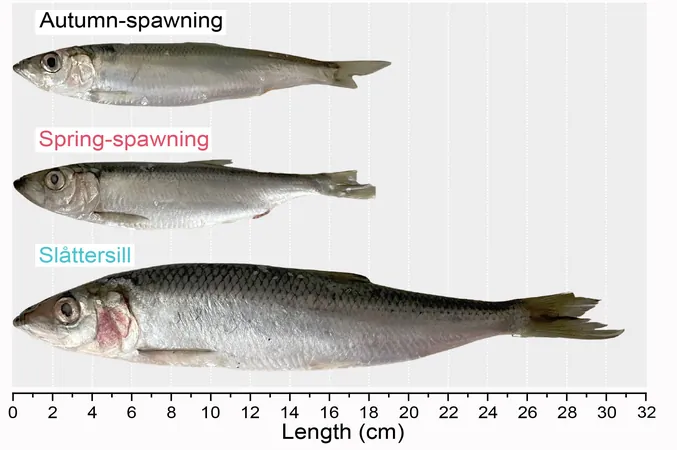
Rethinking Malaria Treatment: The Promising Impact of Tafenoquine in Brazil's Fight Against Plasmodium vivax
2024-12-23
Author: Mei
In the ongoing battle against malaria, Brazil is at a critical juncture, confronting significant health challenges while working towards the ambitious goal of eliminating this disease by 2035. This is particularly urgent in regions like the Amazon, where Plasmodium vivax remains a formidable adversary, accounting for a staggering 73% of the continent's malaria cases predominantly within Brazil, Venezuela, and Colombia. Despite some successes—such as the 64% reduction in malaria incidence across the Americas from 2000 to 2022—many areas continue to struggle due to socio-economic issues, limited healthcare resources, and the perfect breeding conditions for malaria-carrying mosquitoes.
In 2022, Brazil launched a new malaria elimination strategy backed by the Pan American Health Organization (PAHO), aimed at slashing the annual number of malaria cases to below 68,000 by 2025. This initiative prominently features the use of tafenoquine (TQ), a breakthrough single-dose treatment specifically designed for P. vivax malaria. TQ's introduction represents a significant departure from the longstanding practice of administering primaquine (PQ) over seven days, often leading to patient non-adherence due to complex dosing regimens.
The inclusion of tafenoquine in treatment protocols is expected to revolutionize the approach to malaria management in Brazil. An alarming statistic highlights the necessity for change: roughly 33% of Brazilian patients do not complete their mandated PQ treatment, often resulting in recurring malaria cases and further health complications. Tafenoquine, requiring just one dose of 300mg for adults, not only simplifies the treatment process but also improves adherence and outcomes. Furthermore, the Brazilian Ministry of Health has implemented a system of quantitative G6PD testing to identify individuals who may suffer adverse effects from the drug, particularly those with a deficiency that can cause severe hemolytic reactions.
Preliminary pilots in Manaus and Porto Velho suggest that TQ, along with the improved testing protocols, has been well received by both healthcare providers (HCPs) and patients. Interviews reveal a significant increase in patient satisfaction due to the simplicity of the treatment regimen. Many patients, previously burdened by the consumption of numerous PQ pills, now report quicker recoveries and enhanced comfort from TQ's single-dose delivery.
The QualiTRuST study, a mixed-methods qualitative investigation, has underscored the urgent need for healthcare providers to adapt to these changes. Although many HCPs initially expressed uncertainty regarding TQ's efficacy due to the reduction of pill count, training sessions have addressed these concerns, reinforcing the new treatment protocols with evidence from clinical trials demonstrating TQ's effectiveness in preventing recurrent malaria cases.
Yet, despite the potential of TQ, challenges remain. Concerns regarding the lack of patient follow-up post-treatment indicate a need for bolstered communication strategies to ensure adherence and monitor for potential adverse effects. Enhanced education about the importance of completing follow-up visits, particularly on day five after treatment initiation, will remain crucial in maintaining patient trust and safety.
The excitement surrounding tafenoquine does not overshadow the reality that the packaging and distribution in the Brazilian healthcare system requires fine-tuning. While healthcare workers have acknowledged that the introduction of sealed, individualized packaging has fostered patient trust, practical limitations in rural settings may hinder logistics and effective distribution. Adjustments in packaging could facilitate better transportation for healthcare workers in remote areas.
In conclusion, as Brazil forges ahead with the Tafenoquine treatment protocol, the aim is clear: utilize innovative tools to cut down on malaria cases and ensure the population's health is prioritized in the Amazon basin. With the ongoing commitment from healthcare providers and a focus on comprehensive community engagement, there lies a beacon of hope that the ambitious goals of malaria elimination can be achieved. As the nation rallies together to combat this relentless disease, the world watches closely, waiting to see if Brazil can carve out a path to success that other malaria-endemic regions might follow. Will tafenoquine be the game-changer needed to eliminate P. vivax in Brazil’s Amazon? The next few years will be decisive.



 Brasil (PT)
Brasil (PT)
 Canada (EN)
Canada (EN)
 Chile (ES)
Chile (ES)
 España (ES)
España (ES)
 France (FR)
France (FR)
 Hong Kong (EN)
Hong Kong (EN)
 Italia (IT)
Italia (IT)
 日本 (JA)
日本 (JA)
 Magyarország (HU)
Magyarország (HU)
 Norge (NO)
Norge (NO)
 Polska (PL)
Polska (PL)
 Schweiz (DE)
Schweiz (DE)
 Singapore (EN)
Singapore (EN)
 Sverige (SV)
Sverige (SV)
 Suomi (FI)
Suomi (FI)
 Türkiye (TR)
Türkiye (TR)